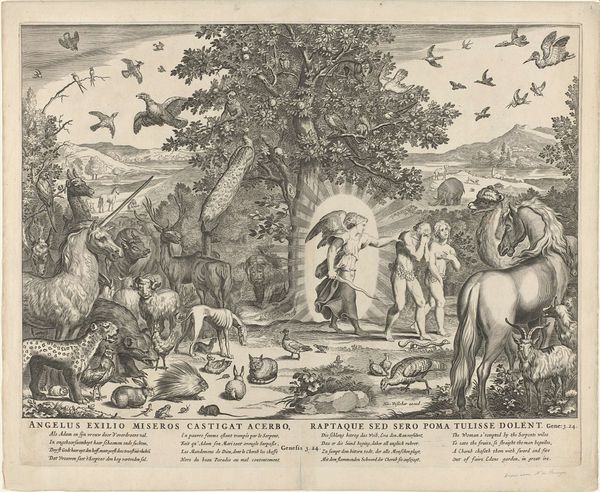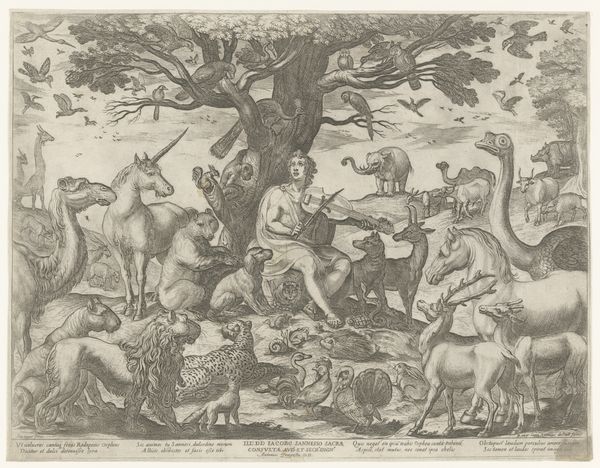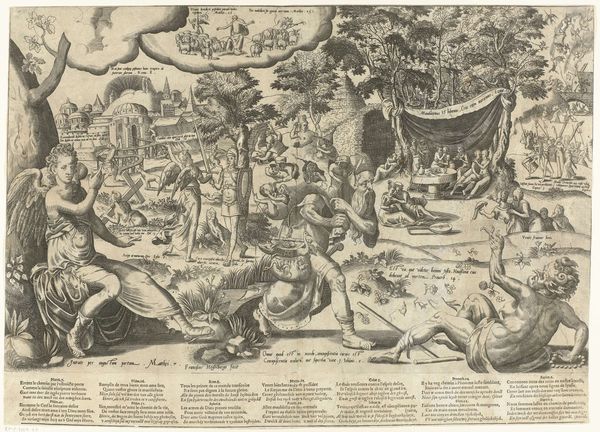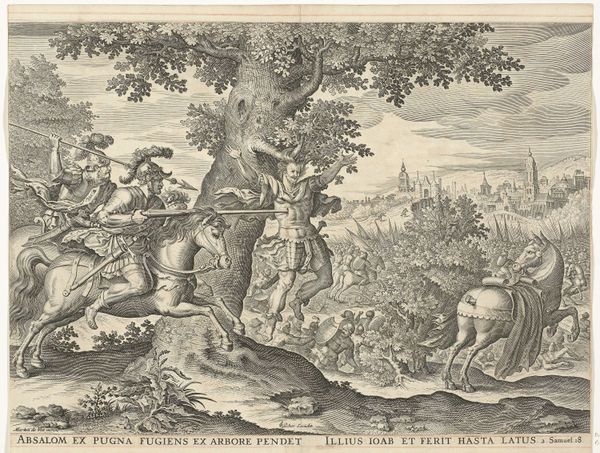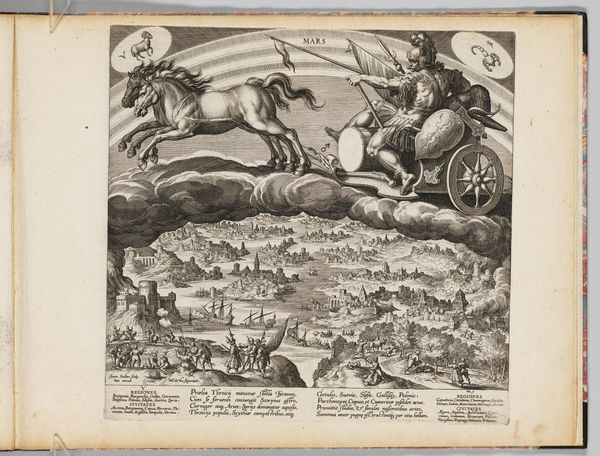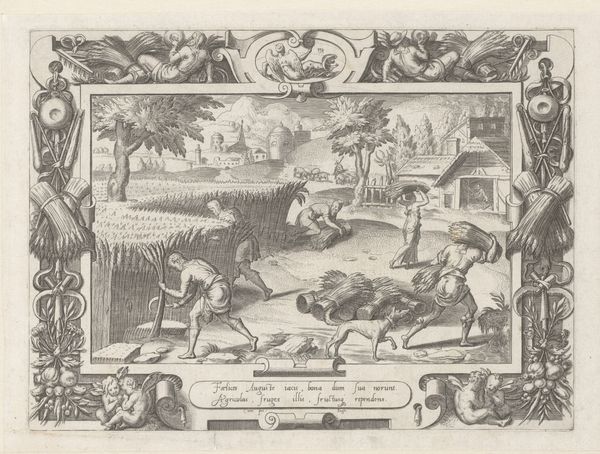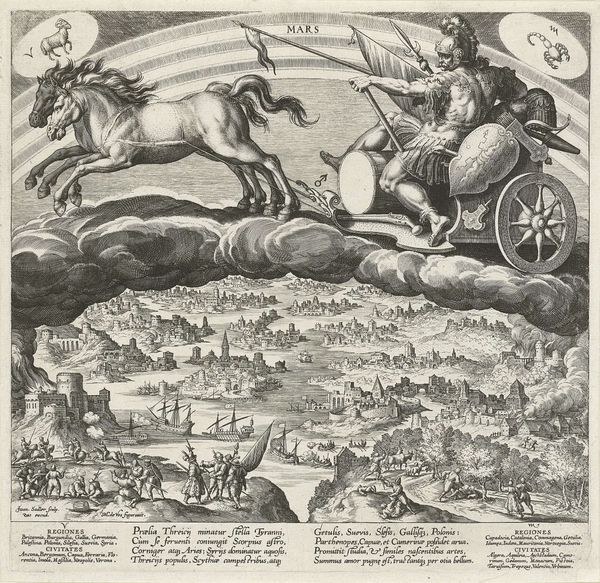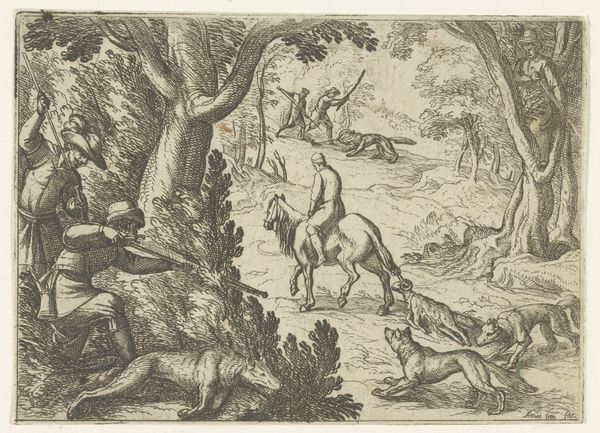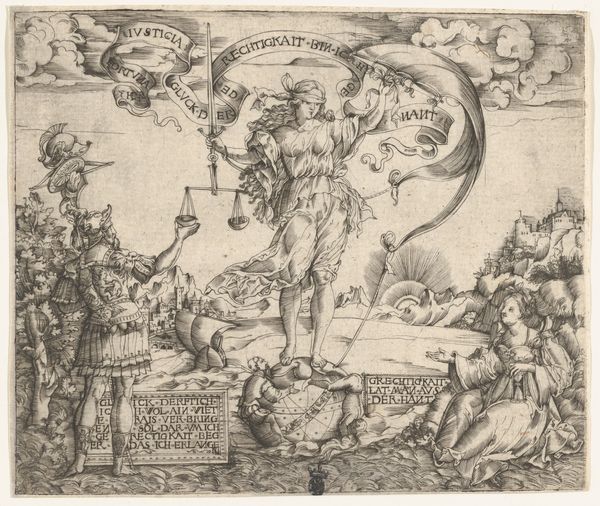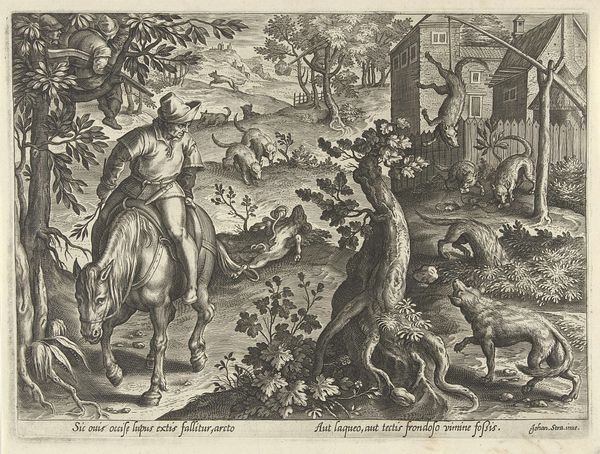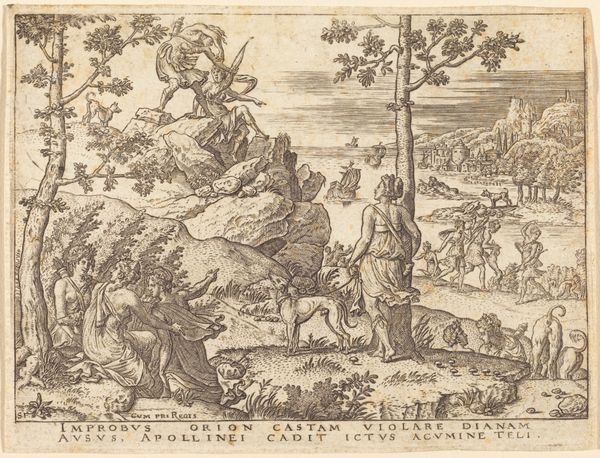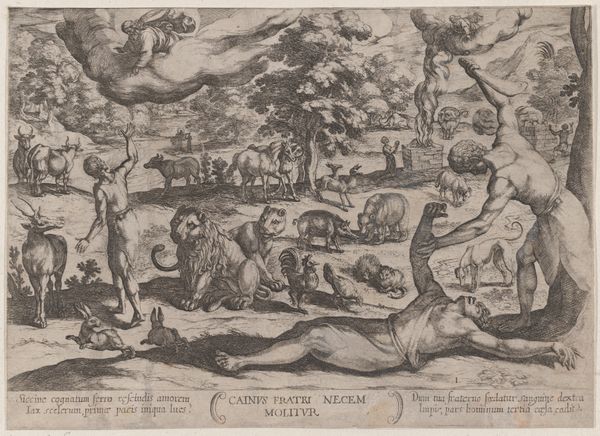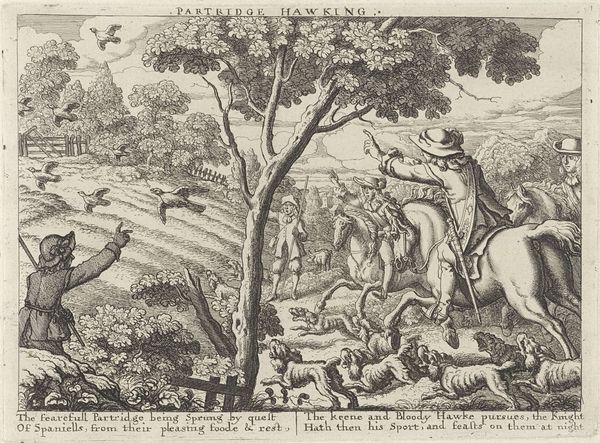
print, engraving
#
allegory
#
narrative-art
# print
#
pen illustration
#
old engraving style
#
mannerism
#
genre-painting
#
history-painting
#
engraving
Dimensions: height 408 mm, width 395 mm
Copyright: Rijks Museum: Open Domain
Curator: Here we have an engraving from between 1600 and 1650, titled “Scharminkel,” artist currently unknown, housed here at the Rijksmuseum. Editor: It's a rather disturbing image, isn't it? A grotesque, emaciated creature dominates the foreground. A weird cross between a camel and, well, something else entirely. There's such stark contrast created through the engraving. Curator: Let's examine the material execution further. Consider the physical process of creating such intricate detail with an engraving tool. This image, etched with incredible precision, involved repetitive, demanding labor. Notice how that meticulousness adds to the nightmarish quality of the image itself? It suggests a relentless commitment to an unsettling vision. Editor: Absolutely. The allegorical layers are intense. I see these figures fleeing from a beast. A pastoral scene twisted into something deeply unsettling, an uncanny predator in this world, though I can't help but think of it like Death, preying specifically on the women. Their elaborate gowns are a sign of worldly desires that are soon dashed by this horrible beast that devours purity. Curator: It could represent various moral panics of the period perhaps, reflecting social anxieties about gender roles and power. Notice that even the very method and physical production—the etching process—is intrinsically connected to production, labor, value and social status during that historical moment. Engravings circulated ideas and visual motifs throughout early modern Europe. The means of creating the image directly shapes our understanding of its content and how it affected a viewing audience. Editor: Perhaps so. But consider the image, stripped from its context; the central beast still has cultural resonance in horror as a representation of disease or war. Curator: Fair enough. Looking at how material means influence the narrative adds an important layer. Editor: It’s true, analyzing the piece on that level deepens how we understand its intended, lasting effects. Curator: Thank you for providing an insight, it would not have struck me so intensely without the analysis of symbolism within the art work. Editor: And I appreciate your insights on materials, which provide another crucial context. I shall not dismiss the means of production of art again!
Comments
No comments
Be the first to comment and join the conversation on the ultimate creative platform.
